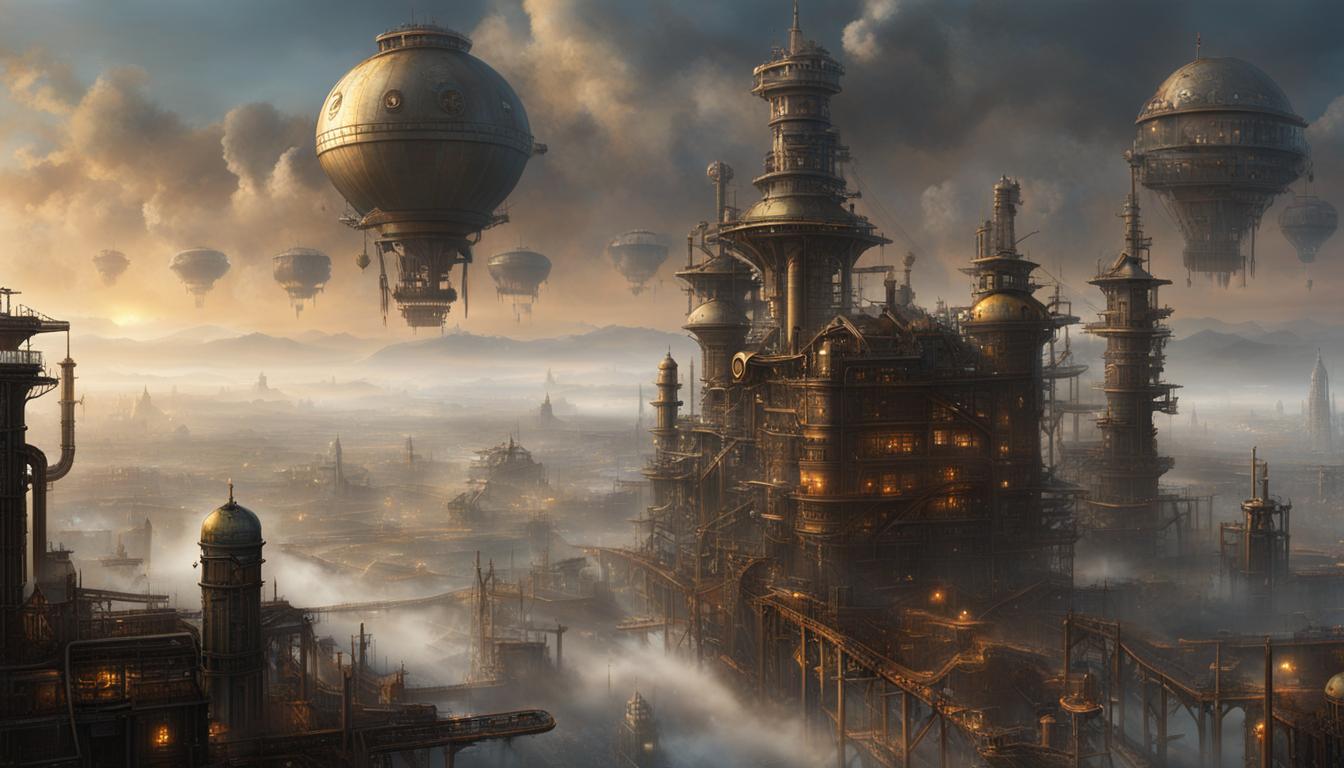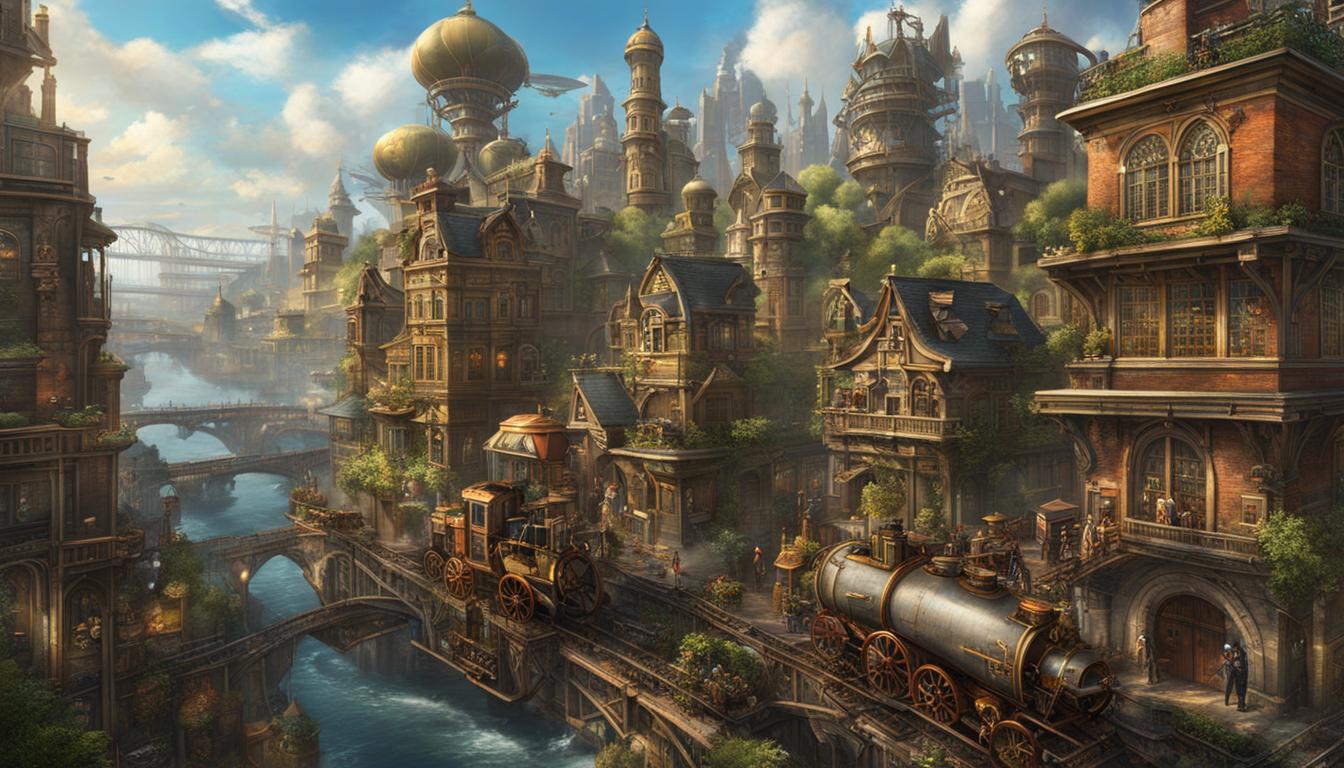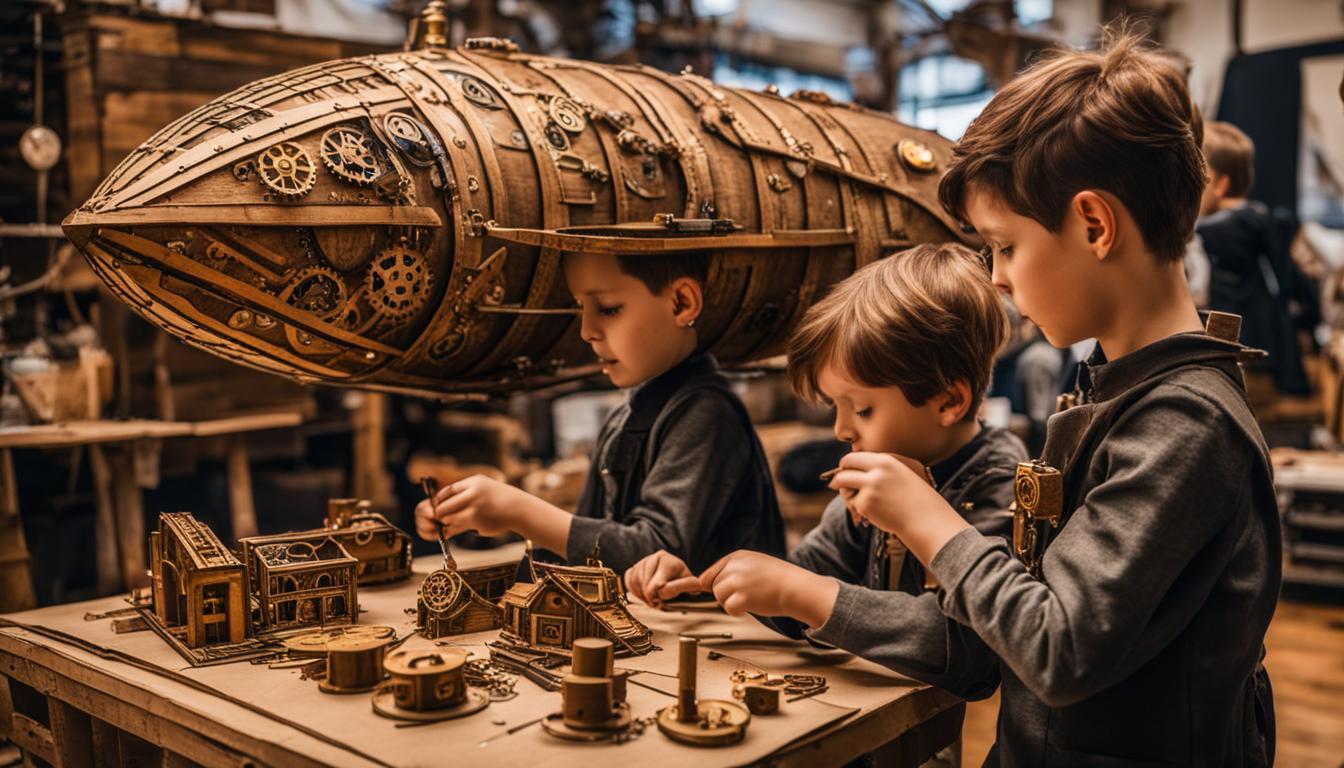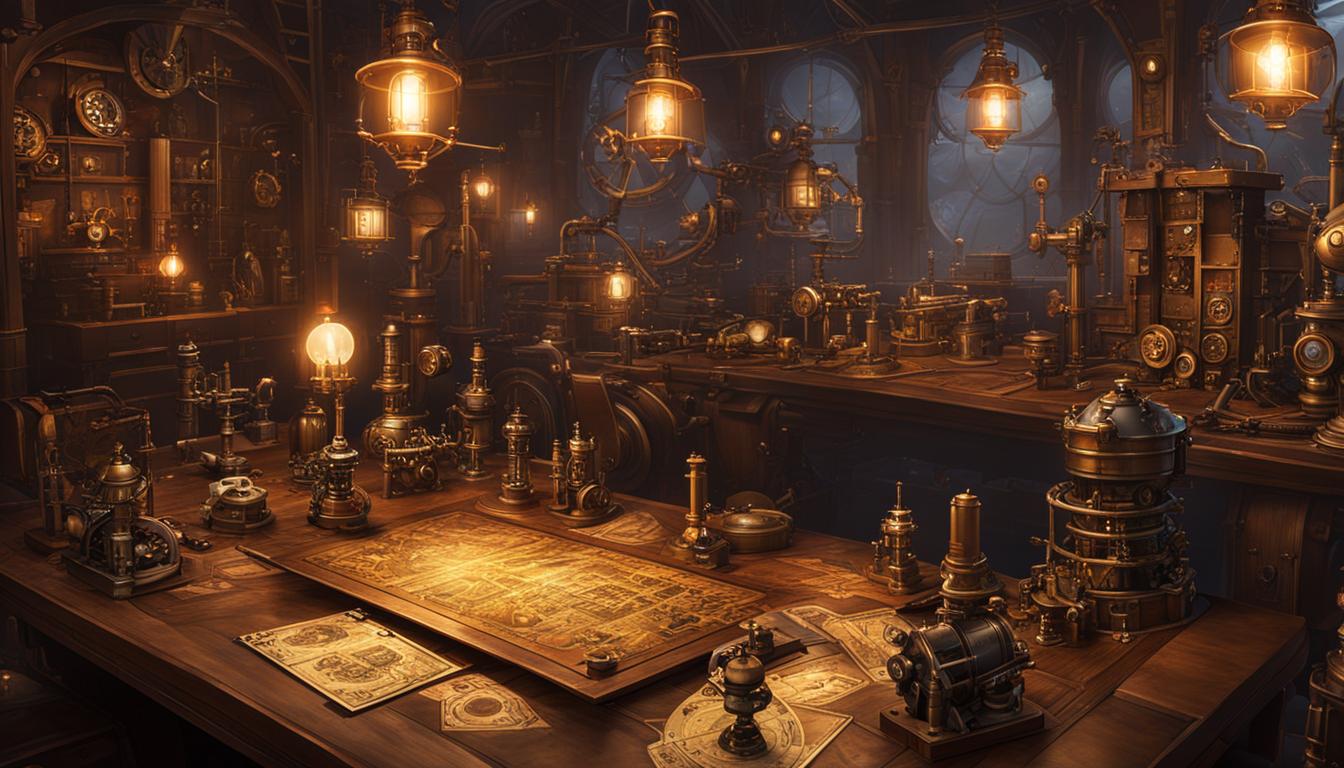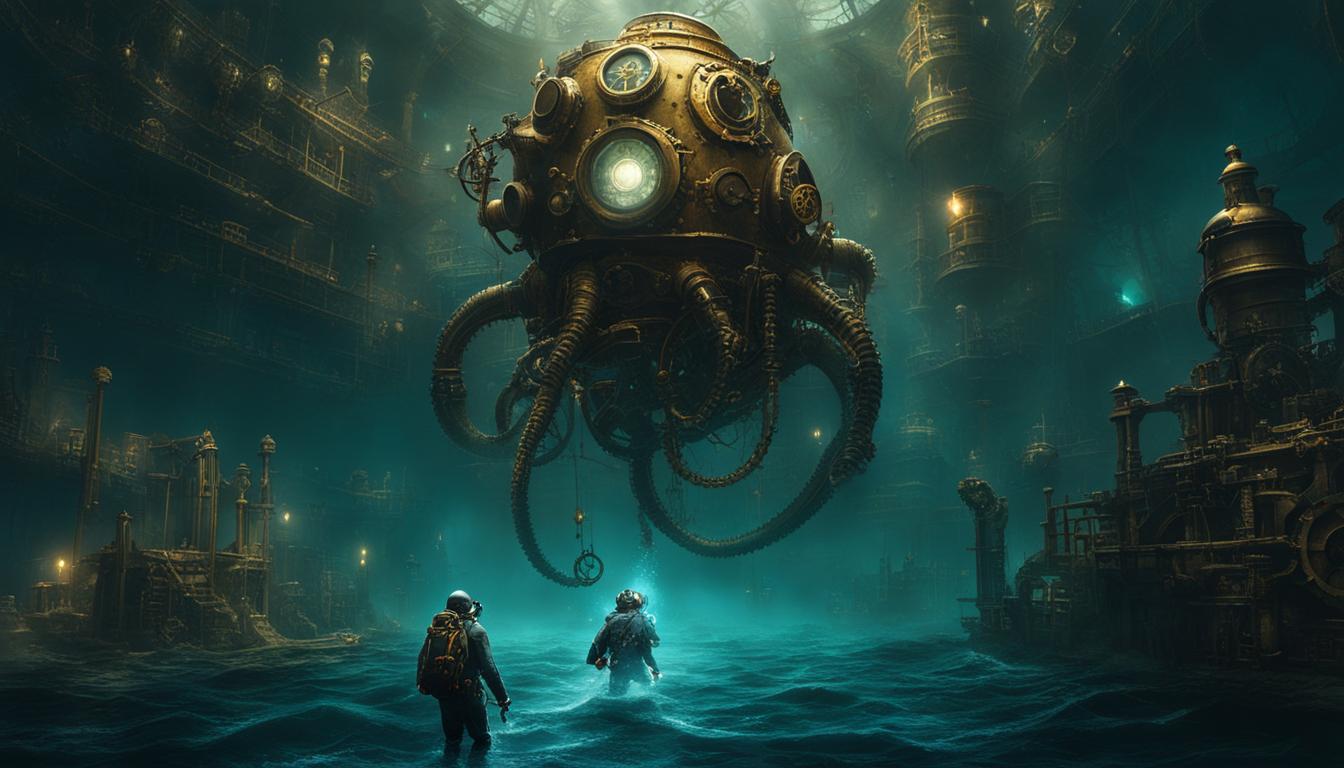Steampunk novels and stories are a literary playground where imagination runs wild. With their unique blend of Victorian aesthetics and advanced technology, these narratives transport readers to mesmerizing alternate worlds. Within these captivating settings, authors have the power to create intricate cultures, diverse races, and rich histories that captivate the mind. Crafting the perfect steampunk setting requires attention to detail, a dash of magic, and a whole lot of ingenuity.
Imagine a world where towering airships dot the sky, powered by the rhythmic whir of steam-driven machinery. Picture bustling cities adorned with ornate clockwork gears, where automatons and humans coexist. In the distance, factories emit billows of steam, their chimneys reaching for the heavens. This is the essence of steampunk, a genre that combines the charm of the past with the awe of innovative technology.
In crafting steampunk novel and story settings, authors hold the key to unlocking the door to limitless possibilities. They have the chance to transport readers to vivid landscapes, immerse them in the clinks and clanks of machinery, and introduce them to a cast of extraordinary characters.
Key Takeaways
- Steampunk novels and stories offer an immersive experience through intricate settings and worldbuilding.
- Creating steampunk landscapes involves drawing inspiration from both Victorian architecture and the industrial revolution.
- Attention to detail in describing the sights, sounds, and smells of the environment helps transport readers to steampunk worlds.
- Building steampunk worlds requires careful consideration of culture, history, and technology.
- By incorporating diverse cultures, races, and a well-thought-out magic system, authors can create vibrant and captivating settings.
Designing Steampunk Landscapes for Stories
Creating the landscapes and environments in a steampunk story is an essential aspect of crafting a captivating narrative. The vivid and immersive settings in steampunk novels transport readers to a world that seamlessly combines historical aesthetics with advanced technology. When designing steampunk landscapes for stories, authors have the opportunity to create visually stunning scenes that evoke both a sense of familiarity and otherworldly wonder.
Steampunk settings often feature bustling cities, factories, and airships, all powered by intricate steam-driven technology. Drawing inspiration from Victorian architecture and the industrial revolution-era landscapes, authors can craft detailed and realistic depictions of their steampunk worlds. It is crucial to pay attention to the sights, sounds, and even smells of the environment, enabling readers to fully immerse themselves in the story’s atmosphere.
By skillfully incorporating descriptive language, authors can transport their audience to sprawling metropolises filled with towering skyscrapers adorned with brass and copper accents. They can introduce readers to the symphony of steam hissing from pipes and gears turning in unison. Crafting steampunk landscapes also involves creating dynamic contrasts between gloomy alleyways and opulent ballrooms, showcasing the stark divide between social classes.
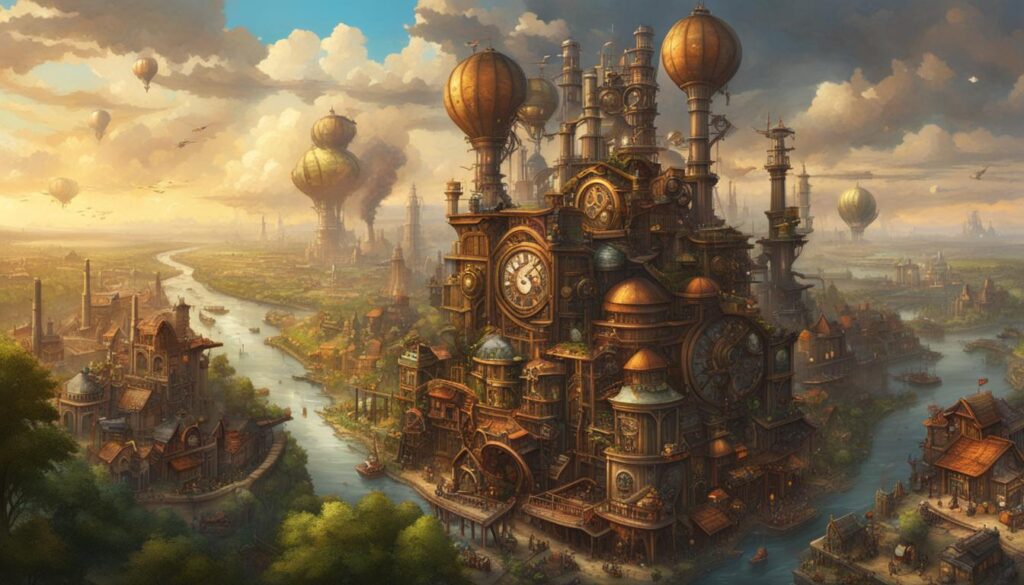
Exploring the Possibilities: Table 1
| Element | Description |
|---|---|
| Cityscape | A bustling city built with intricate steampunk architecture, complete with towering skyscrapers, flying airships, and steam-powered transportation systems. |
| Industrial District | A gritty and bustling area filled with factories, smokestacks, and the constant noise of steam-powered machinery. |
| Countryside | A rural landscape dotted with windmills, steam-powered farms, and lush greenery, showcasing a blend of natural beauty and technological advancements. |
| Underground Society | A hidden world beneath the city streets, where rebels, inventors, and outcasts gather to create their own society away from the prying eyes of the upper class. |
As demonstrated in Table 1, designing a steampunk landscape opens up a plethora of possibilities for authors. From the towering cityscape to the hidden underworld, each element contributes to the overall atmosphere and worldbuilding of the story. By carefully selecting and describing these elements, authors can transport readers to a world that feels simultaneously real and fantastical, immersing them in the wonders of steampunk literature.
Building Steampunk Worlds in Fiction
Building a steampunk world in fiction is a creative endeavor that requires careful consideration of various elements. Authors have the opportunity to create unique and immersive landscapes, cultures, and technologies that bring their stories to life. The process of building a steampunk world involves crafting intricate settings, developing diverse cultures, and incorporating advanced technologies.
When it comes to designing the settings of a steampunk world, authors can draw inspiration from Victorian architecture and industrial revolution-era landscapes. They can create bustling cities with towering buildings adorned with intricate gears and cogs. These cities can be juxtaposed with vast wilderness areas, where steam-powered airships soar through the sky. By combining these elements, authors can create visually engaging landscapes that transport readers to a world unlike any other.
“In steampunk novels, the setting is often a character in itself, playing a pivotal role in shaping the story,” says acclaimed steampunk author Victoria A. Rutherford. “By meticulously crafting the details of the world, authors can create an enchanting ambiance that captivates readers and pulls them deeper into the narrative.”
In addition to the landscapes, authors also have the opportunity to create unique cultures within their steampunk worlds. They can draw inspiration from different real-world cultures or invent entirely new ones. These cultures can have their own customs, languages, and belief systems, adding depth and richness to the storytelling. By incorporating diverse cultures, authors can create a sense of realism and immerse readers in a world that feels both familiar and fantastical.
| Element | Role in Steampunk World |
|---|---|
| Technology | The driving force behind the narrative, often featuring intricate gadgets and steam-powered inventions. |
| Culture | Creates diversity and depth within the world, allowing for fascinating interactions between characters and societies. |
| History | Shapes the current state of the world, providing a backdrop for conflict, politics, and character motivations. |
The process of building a steampunk world in fiction is a delightful journey of exploration and creativity. By carefully crafting the settings, developing unique cultures, and incorporating advanced technologies, authors can transport readers to immersive and enthralling worlds that linger in their minds long after the last page is turned.
Conclusion
Steampunk stories unlock a world of imagination and creativity, where authors can build captivating and immersive settings that transport readers to novelistic steampunk worlds. By mastering the art of crafting steampunk scenes in literature, authors can create stories that leave a lasting impression.
From designing landscapes to building intricate worlds, every detail matters when it comes to steampunk story world-building. By paying attention to the sights, sounds, and even smells of the environment, authors can paint a vivid picture of their steampunk settings, enticing readers to step into these alternate realities.
Diversity in cultures and races within the steampunk world adds depth and richness to the story. Drawing inspiration from existing cultures or creating entirely new ones allows authors to create vibrant and diverse settings, captivating readers with a tapestry of different traditions, languages, and beliefs.
Incorporating a well-thought-out magic system further enhances the steampunk experience. Whether it’s the mysterious powers of steam-driven technology or the enigmatic forces of alchemy, a strong and believable magic system adds an extra layer of intrigue to the story, captivating readers from beginning to end.
So, grab your goggles and immerse yourself in the bronze-age ambience of steampunk literature. Unlock the gateway to novelistic steampunk worlds, where wonder and adventure await at every turn. From crafting detailed scenes to weaving together diverse cultures, steampunk story world-building offers an endless realm of possibilities for authors to explore.
FAQ
How can authors create captivating and immersive settings in steampunk novels and stories?
By blending Victorian aesthetics with advanced technology, paying attention to detail, and worldbuilding.
What elements are important for creating landscapes and environments in a steampunk story?
Attention to detail, inspiration from Victorian architecture and industrial revolution-era landscapes, and vivid descriptions of sights, sounds, and smells.
What elements should authors consider when building a steampunk world in fiction?
Culture, history, and technology, including creating unique and diverse cultures, developing a rich history, and incorporating intricate gadgets and steam-powered inventions.
What possibilities do steampunk novels and stories offer for crafting enthralling settings?
Endless possibilities for designing landscapes, building intricate worlds, and immersing readers in a unique blend of history and technology.

